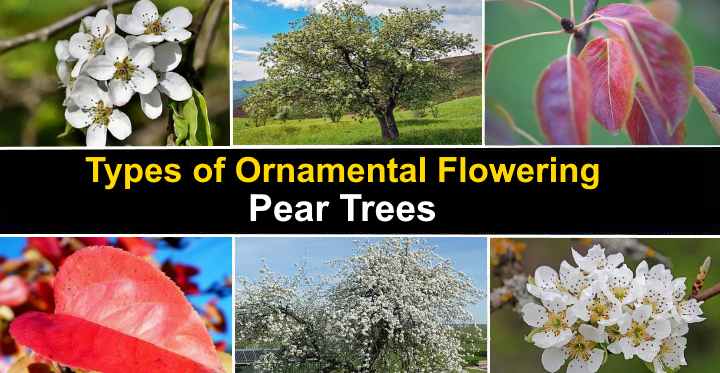The Pyrus calleryana, or ornamental flowering pear tree, produces beautiful white flowers every spring. The glossy green leaves are oval and rounded, and the deciduous pear tree also boasts yellow, orange, and red fall colors. While the tree produces small pears, they are not of much use and the tree is mainly valued for its ornamental purposes.
The callery pear is the most popular variety of decorative pear trees and is also known as the ornate fruitless pear. Though they do not bear fruit, all varieties of flowering pear trees, including Pyrus calleryana, do produce fruit. However, the masses of white flowers covering the tree’s bare branches in spring make up for its lack of fruit.
This article provides information on how to identify different types of ornamental pear trees and choose the best one for your landscape by reading descriptions and viewing pictures. It also provides tips on caring for decorative flowering pear trees in your yard.
Ornamental vs. Fruiting Pear Trees
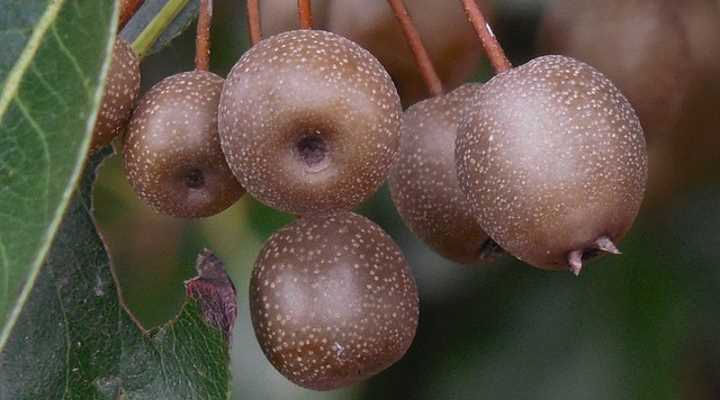
This close-up picture shows the fruit of both fruiting pear trees and ornamental Callery pear trees. Despite being produced by decorative pear trees, the pears are very small, barely half an inch (1 cm) in size. The Pyrus calleryana fruit has a bitter taste, which makes it inedible for most people.
The fruit of Callery pear trees, such as the popular ‘Bradford’ cultivar, develops in small clusters and resembles cherries. Unlike the fruit from traditional fruiting pear trees, Callery pears are spherical like berries. Clusters of these little spherical pears usually attract birds and animals in the fall and winter.
Ornamental Flowering Pear Trees
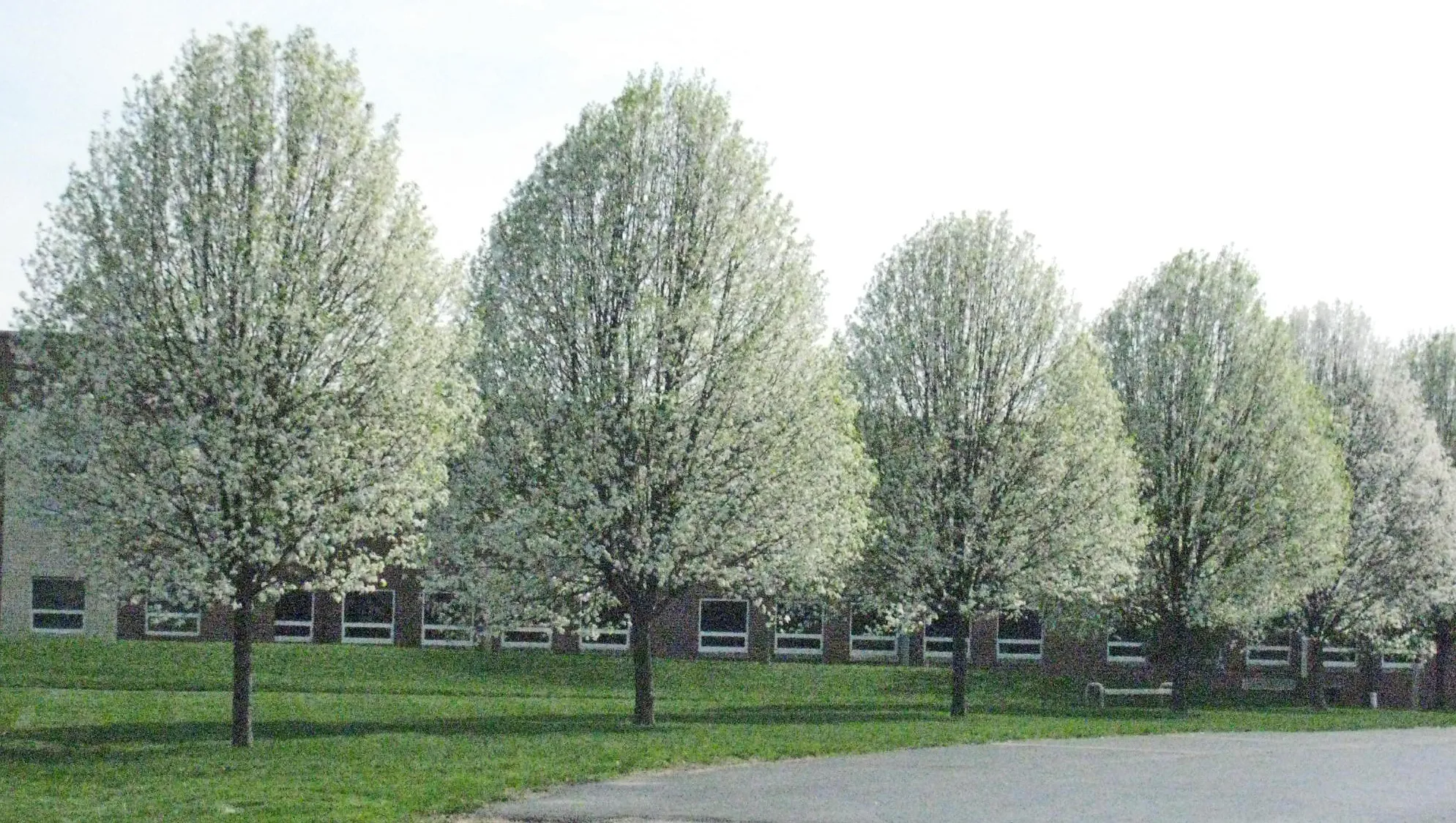
In the springtime, ornamental pear trees display stunning white flowers. One remarkable example is the Bradford pear tree, which is a deciduous flowering tree with glossy green leaves, cup-shaped white flowers, and beautiful autumn colors. Pyrus calleryana trees generally have a pyramidal, upward growth form, and they can reach heights of 32 to 40 feet (10 to 12 meters) and widths of 22 to 30 feet (7 to 9 meters).
Landscaping trees like the Callery pear are generally low-maintenance. Unlike fruiting pear trees, Pyrus calleryana does not produce much fruit and is not a messy tree. Additionally, ornamental pear tree cultivars are resistant to many diseases that afflict fruit trees, and they can withstand heat and drought.
Because of these benefits, ornamental pear trees are popular in both front and backyards, and they can be found in USDA zones 5 through 9.
Types of Ornamental Pear Trees
Most decorative pear cultivars come from the flowering tree species Pyrus calleryana. However, other fruit trees such as Manchurian pears (Pear ussuriensis), snow pears (Pyrus nivalis), and weeping pears (Pyrus salicifolia) are grown for their flowers rather than their fruit. If you want to add a unique touch to your garden landscape, consider planting one of the following decorative pear tree cultivars:
- Bradford Pear (Pyrus calleryana ‘Bradford’) – A beautiful ornamental pear tree with a conical shape, lustrous green ovate leaves that change color in autumn, and white pear blossoms.
- Cleveland Select (Pyrus calleryana ‘Cleveland Select’) – This ornamental pear cultivar is known for its bright white blooms and narrow growth.
- Capital Pear (Pyrus calleryana ‘Capital’) – A small vase-shaped crown and masses of white flowers are the distinguishing features of the ‘Capital’ pear cultivar.
- Redspire Pear (Pyrus calleryana ‘Redspire’) – A glossy green leafed pyramid-shaped hardy decorative pear with a profusion of white spring blossom clusters.
Pear Tree Blossoms

Ornamental pear blossoms, Pyrus calleryana, have slightly cup-shaped white petals that bloom in clusters of five to seven flowers. However, some decorative pear trees are known for producing an unpleasant odor.
How to Care for Flowering Ornamental Pear Trees
To take care of ornamental pear trees, they should be grown in a sunny area with well-draining soil. It is recommended to water Pyrus calleryana once a week during hot weather to keep the soil moist but not waterlogged. While pruning is not necessary for maintaining their shape, it can be done in the winter.
Ornamental Flowering Pear Trees (With Pictures)
Let’s explore the many types of flowering shrubbery pear trees that may be cultivated in your yard in depth.
Callery Pear (Pyrus calleryana)
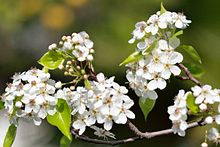
Callery pear is a deciduous flowering tree that produces clusters of tiny white flowers during the summer. The foliage of Pyrus calleryana is glossy and dark green, turning into rich red, purple, bronze, and yellow hues during the fall. The Callery ornamental pear tree grows up to 16 to 35 feet (5 to 10.5 meters) tall and 16 feet (5 meters) wide.
It has a conical shape as it matures and is a fast-growing tree that thrives in most soil types and full sun. Callery pear can be used as an attractive landscaping tree because of its spring flowers, summer foliage, and stunning fall colors. Most decorative pear trees, including Callery pears, grow well in USDA zones 5 through 8.
Ornamental Pear Tree ‘Cleveland Select’ (Pyrus calleryana ‘Cleveland Select’)

In the springtime, the ‘Cleveland Select’ pear tree displays attractive white blossoms. The Pyrus calleryana ‘Cleveland Select’ is characterized by its compact pyramidal form, early spring flowers, and smooth-edged, glossy green leaves. At maturity, it can reach a height of 35 feet (10.5 meters) and a width of 16 feet (5 meters).
This ornamental fruitless pear tree has a cone-shaped structure, upright growth, and sturdy branches. One of the quickest-growing ornamental pear trees, the ‘Cleveland Select,’ is extremely cold-hardy, thriving in USDA zones 4 to 9. For best results, plant it in full sun and well-drained fertile loamy soil.
Regular watering is necessary to keep the soil moist, as with most ornamental pear trees. Adding a layer of organic mulch to the root zone helps keep the soil moist and provides nutrients to the tree.
Ornamental Pear ‘Bradford’ (Pyrus calleryana ‘Bradford’)
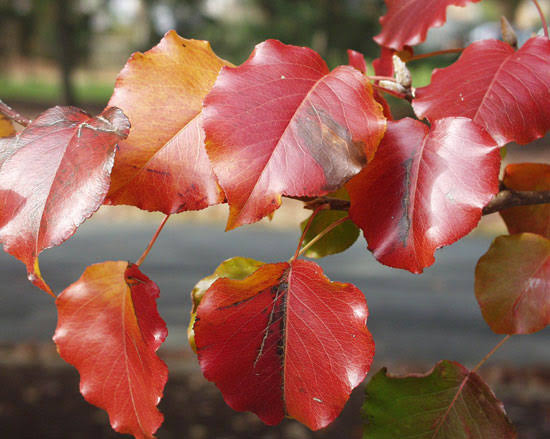
The Bradford pear cultivar is known for its beautiful white flowers that bloom in large clusters in April. The tree has dark green leaves with a glossy surface and wavy edges that are narrow-oval in shape. The leaves turn from red to purple to bronze in the fall, adding to the tree’s attractiveness.
The Bradford pear tree can grow between 30 and 50 feet (9–15 meters) tall and up to 35 feet (10.5 meters) wide. It has a thornless structure and a spreading crown that becomes more rounded as the tree matures, making it an excellent choice for a shade tree.
However, the Bradford pear cultivar has a weakness in its branch strength, which causes the branches to snap in strong winds. As a result, the tree is no longer recommended for planting as an ornamental flowering pear tree in garden landscapes.
‘Autumn Blaze’ Ornamental Pear Tree (Pyrus calleryana ‘Autumn Blaze’)
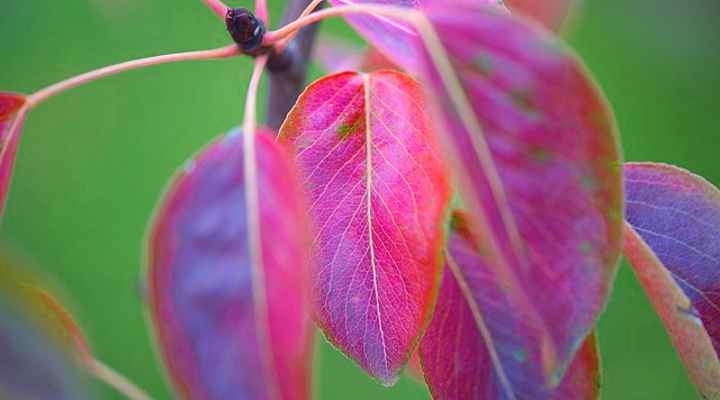
The Pyrus calleryana ‘Autumn Blaze’ is a popular deciduous flowering pear tree that is known for its spectacular white blooms and its beautiful autumn colors. With a maximum height of 40 feet (12 meters) and width of 30 feet (9 meters), this non-fruit bearing ornamental tree has a rounded shape with glossy dark green leaves on a single stem.
In early spring, the ‘Autumn Blaze’ displays a profusion of white flowers that create a stunning display. As the season changes, the glossy dark green leaves of the tree turn into a brilliant shade of red, creating a vibrant autumnal display. This fast-growing pear tree is cold-hardy and can withstand temperatures as low as -30°F (-34°C), making it suitable for USDA zones 4 through 9.
‘Redspire’ Pear Tree (Pyrus calleryana ‘Redspire’)
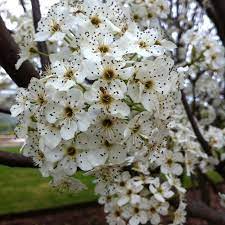
The ornamental pear tree cultivar ‘Redspire’ is known for its beautiful crimson or yellow fall foliage and large white blossoms that can grow up to 40 feet (12 meters) tall and 20 feet (6 meters) wide. The tree has an upright, spreading growth habit and a columnar form, and its branches produce ovate-shaped leaves that are 2-4 inches (5-10 cm) long.
The ‘Redspire’ cultivar is known for having some of the largest blossoms among all ornamental pear trees, but despite being classified as a fruitless tree, it does produce small round pea-sized pears that are popular with birds and other animals. Unlike fruiting pear trees, the ‘Redspire’ is not a messy tree, and its small fruits do not cause a problem when they fall.
‘Aristocrat’ Pyrus calleryana
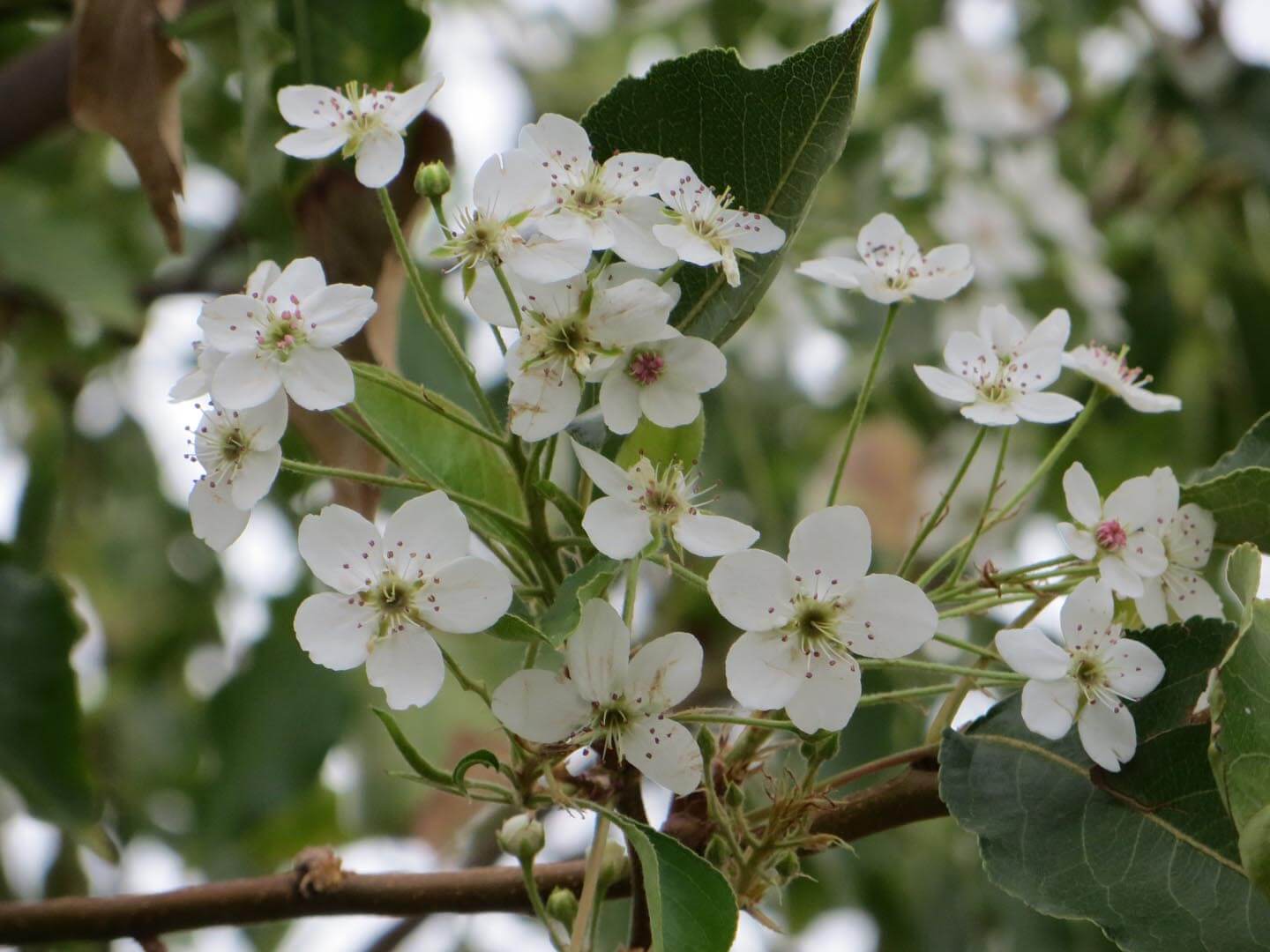
The ‘Aristocrat’ ornamental pear tree is known for its slender size and white flowers, as well as its small edible fruits. Unlike some other types of ornamental pear trees, the ‘Aristocrat’ is thornless. It typically grows to a height and width of 25-35 feet (7.5 to 10.5 meters).
One unique feature of this tree is its horizontal branching pattern. Although it grows more slowly than some other pear cultivars, it still maintains the traditional pyramidal shape of most ornamental pear trees.
It’s an excellent choice as a shade tree in garden landscapes or as a tall screen plant when planted in rows. The ‘Aristocrat’ can also thrive in shallow or compact soil.
‘Chanticleer’ Pyrus calleryana
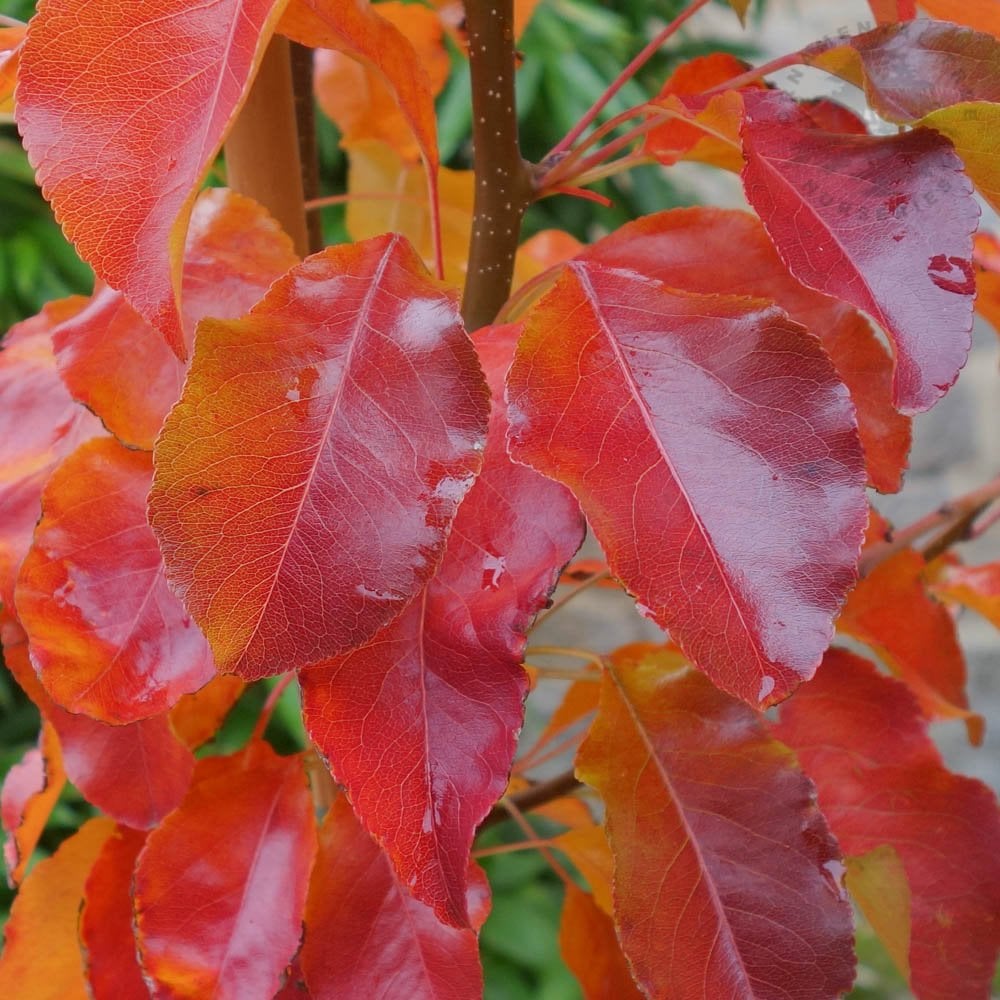
The ornamental pear tree has a slender pyramidal shape, brilliant white blooms, and leathery, dark green leaves that dangle on the end of long petioles. It grows about 30 ft. (9 m) tall and spreads up to 15 ft. (4.5 m) wide. The tree’s columnar growth habit is seen in certain varieties.
One of the nicest ornamental pear trees for garden settings is the ‘Chanticleer.’ ‘Chanticleer’ is ideal for tight spaces because of its slender growth habit. Most soil types and drought tolerance are tolerated by the attractive upright trees. During hot weather, the pear tree only needs six hours of sunlight and frequent watering.
The tree’s beauty comes from the thick, dense foliage that turns into rich orange and red fall colors, in addition to its white spring blooms.
‘Korean Sun’ Pear Tree (Pyrus fauriei)

The Korean Sun pear tree is a slow-growing ornamental tree that grows up to 15 feet tall and has beautiful foliage that turns from pale to deep green in the autumn.
This tiny tree produces oval leaves just before the flower buds open, and in the autumn, the leaves take on vivid red and orange hues.
The Korean Sun pear tree is known for its dense flower clusters and striking crimson autumn colors. Unlike other ornamental pear trees, the Korean Sun tree’s flowers emit a light, pleasant scent. This low-maintenance tree is an excellent choice for small gardens as it requires minimal pruning to maintain its attractive pyramid shape.
‘Capital’ Pear (Pyrus calleryana ‘Capital’)

The slender growth and vase-shaped crown of the Capital pear cultivar make it ideal for narrow areas. This fruitless ornamental pear tree produces an abundance of clusters of flowers similar to other cultivars.
The upright foliage of the tree comprises of glossy, dark green, ovate leaves, which appear lush. The tree can grow up to 36 feet (11 meters) tall and 8 to 12 feet (2.4 to 3.6 meters) broad.
The ‘Capital’ pear tree can be planted in your garden, where it will flourish, and it requires regular watering in the spring and summer to promote a profusion of blooms. The slender growth of the ‘Capital’ pear tree makes it a great choice for tight spots in your garden.
Weeping Pear Tree (Pyrus salicifolia ‘Pendula’)

The ornamental weeping pear is a small pear tree with willow-like leaves and silvery gray-green narrow leaves. The fruits of Pyrus salicifolia ‘Pendula’ are inedible and hard with a bitter taste. The drooping pear tree is 20 feet (7 meters) broad and grows to a height of 20 feet (7 meters).
The weeping pear tree has arching branches and is often referred to as the willow-leaved pear due to its green leaves. The specimen tree has an umbrella shape thanks to its rounded canopy and drooping leaves. This little landscape tree is also known as the weeping silver-leaved pear because of its gray-white silvery leaves.
Caring for the ornamental weeping pear requires ensuring that it receives enough sunlight and moisture. Pyrus salicifolia ‘Pendula’ is suitable for most soils, including infertile sandy soils.
Edgedell Pear (Pyrus calleryana x Pyrus betulaefolia)

With upright growth and dense clusters of white star-shaped blossoms, the Edgedell pear is a unique and eye-catching decorative pear tree. This medium-sized tree has silvery-gray leaves that add to its aesthetic appeal. Its narrow, conical form makes it a great choice for small backyards.
Growing up to 26 feet (8 meters) tall and 13 feet (4 meters) broad, the Edgedell pear tree is well-suited for garden landscapes. The tree also displays stunning fall colors, with its leaves changing to bright shades of red, pink, yellow, and sometimes dark purple.
‘Fauer’ Pear Tree (Pyrus calleryana ‘Faueriei’)

The ‘Fauer’ ornamental pear tree is known for its striking white spring blooms, dark green ovate leaves, and stunning yellow and orange fall foliage. It is a Pyrus calleryana cultivar that thrives in USDA zones 5 through 8, growing to a height of 30 to 40 feet (9 to 12 meters) and spreading 20 to 30 feet (6 to 9 meters) wide.
Like all Pyrus trees, the ‘Fauer’ pear cultivar prefers full sun exposure. However, it requires more water than other pear cultivars and should be planted in well-draining, moist soil.
Snow Pear (Pyrus nivalis)

This picture depicts a flower of the snow pear tree, which is commonly grown for its ornamental value due to its sour-bitter fruit and silvery green leaves that turn into stunning autumn colors.
The snow pear is a low maintenance, medium-sized tree with a spherical growth habit and white spring flowers.
Pyrus nivalis can reach a height of 20 to 33 feet (6 to 10 meters) and a width of 16 to 23 feet (5 to 7 meters). It is known for its drought tolerance and ability to withstand extreme temperatures.
